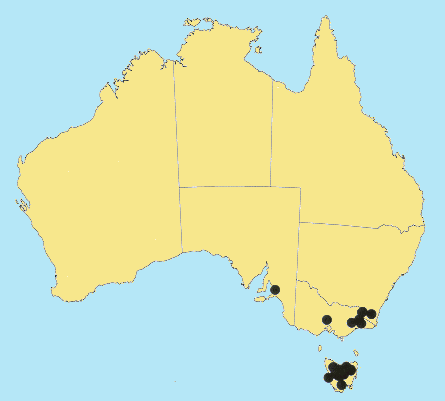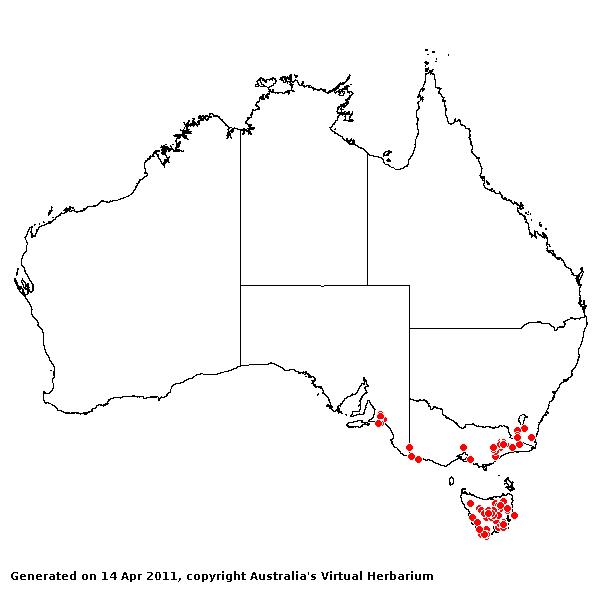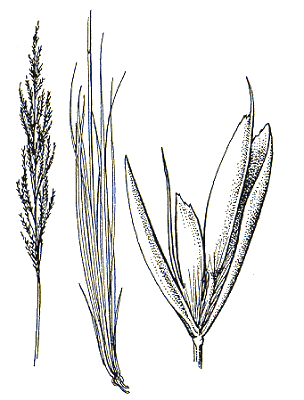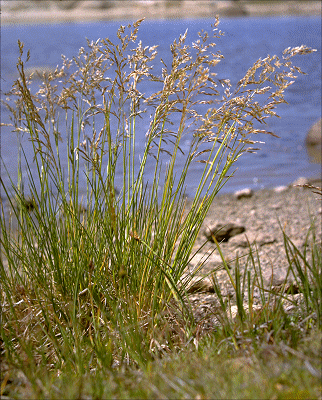Deschampsia cespitosa (L.) Beauv. Ess.
Agrost. 91, 149, 160 (1812).
Classification. (GPWG 2001) : Subfamily Pooideae.
Tribe Poeae.
Basionym and/or
Replacement Name: Aira cespitosa
L., Sp Pl. 1: 64–65 (1753).
Type of Basionym or
Protologue Information: Hab. in Europae partis cultis & fertilibus,.
Key references
(books and floras): [1878] G.Bentham, Flora Australiensis 7 (587 as Deschampsia
caespitosa), [2002] D.Sharp & B.K.Simon, AusGrass, Grasses of
Australia, [2006] J.Jessop, G.R.M.Dashorst, F.M.James, Grasses of South
Australia (211), [2008] S.W.L.Jacobs, R.D.B.Walley & D.J.B.Wheeler, Grasses
of New South Wales (196), [2009] A.Wilson (ed.). Flora of Australia,
Vol 44A. Poaceae 2 (257).
Illustrations:
[2006] J.Jessop, G.R.M.Dashorst, F.M.James, Grasses of South Australia (210, fig. 157), [1984] N.T.Burbidge. rev.
S.W.L.Jacobs, Australian Grasses (as D. caespitosa), [2008]
S.W.L.Jacobs, R.D.B.Whalley & D.J.B.Wheeler, Grasses of New South Wales,
4th edn (196), [2009]. A.Wilson (ed.), Flora of Australia 44A: Poaceae 2
(260, Fig.35).
Habit.
Perennial. Rhizomes present, short. Culms erect, 20–200 cm tall, 1–3 -noded.
Leaves mostly basal. Leaf-sheaths smooth or scaberulous. Ligule an eciliate
membrane, 10–15 mm long, acute. Leaf-blades flat or involute, 80–270(–600) cm
long, 1.5–5 mm wide. Leaf-blade surface scabrous.
Inflorescence.
Inflorescence compound, a panicle. Panicle oblong or ovate, 6.5–50 cm long,
3–20 cm wide.
Spikelets.
Spikelets pedicelled. Fertile spikelets many flowered, with at least 2 fertile
florets (2–3), comprising 2–3 fertile floret(s), with a barren rachilla
extension, lanceolate or oblong, laterally compressed, 4–6 mm long.
Glumes. Glumes
similar, similar to fertile lemma in texture, shiny. Lower glume lanceolate,
membranous, keeled, 1-keeled, 1–3 -nerved. Upper glume elliptic, 4–6.8 mm long,
membranous, keeled, 1-keeled, 3–5 -nerved.
Florets.
Fertile lemma 3–4.5 mm long, without keel, 5–7 -nerved. Lemma apex erose or
dentate, awned, 1 -awned. Median (principal) awn dorsal, 3–5 mm long overall.
Palea apex dentate. Lodicules present. Anthers 3.
Continental
Distribution: Europe, Africa, Temperate Asia, Tropical Asia, Australasia,
North America, South America, and Antarctica.
Australian
Distribution: South Australia, New South Wales, Victoria,
Tasmania, Macquarie,
Heard.
South Australia: Southern Lofty. New South Wales:
Southern Tablelands, Central-Western Slopes, North-Western Plains. Victoria: Midlands,
Snowfields. Tasmania: North West, North East, West Coast, Central
Highlands, Midlands, Ben Lomond, East Coast, South West.
Notes. Complex species
with a number of subspecific taxa recognised in Europe.
Widely distributed, Europe, eastern Asia
Africa and North America. From sea-level to
high altitudes, usually in fresh or brackish water, margins of salt marshes,
peaty sites. Flowers Sept.-Mar. Fruits Mar.




